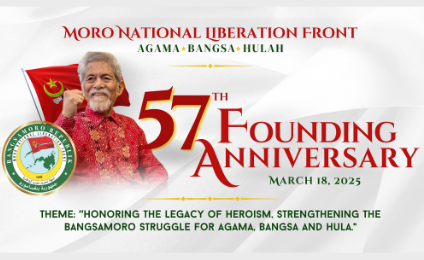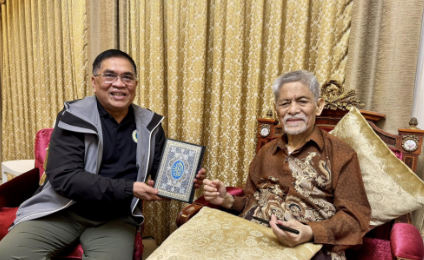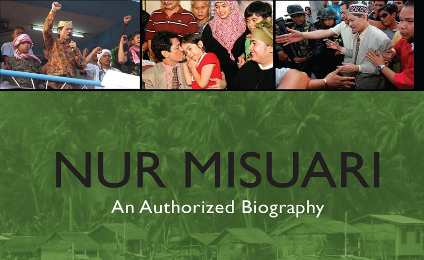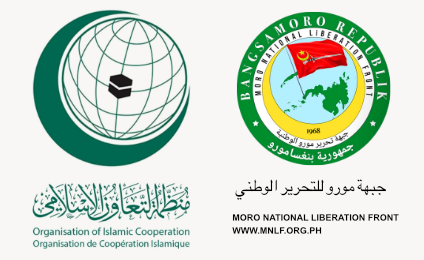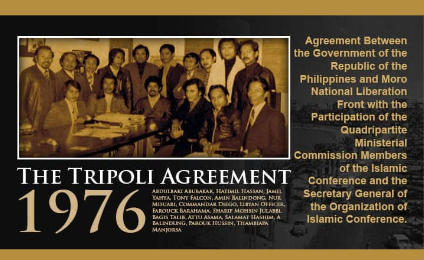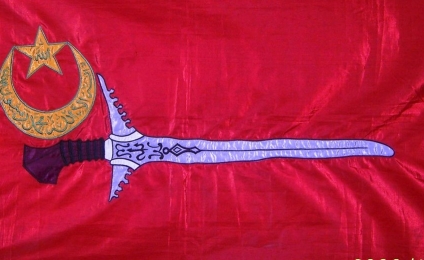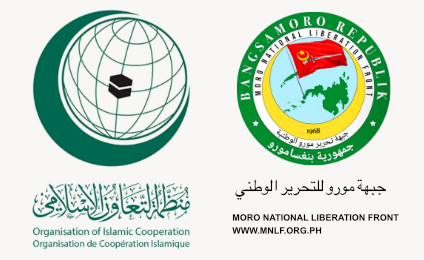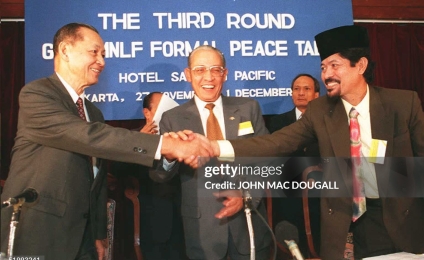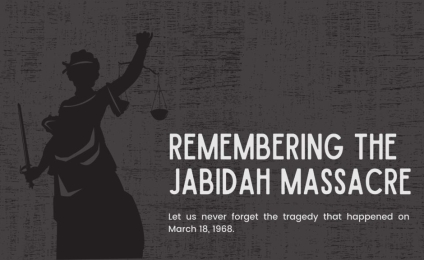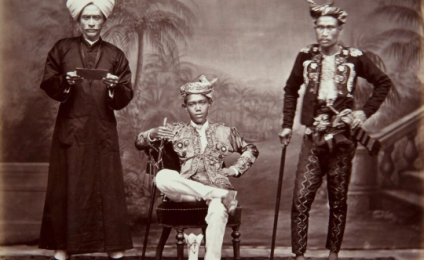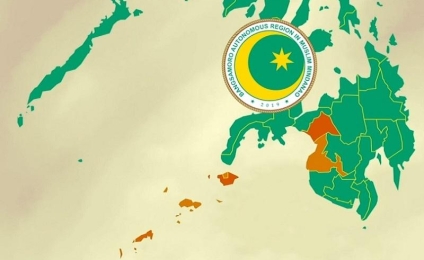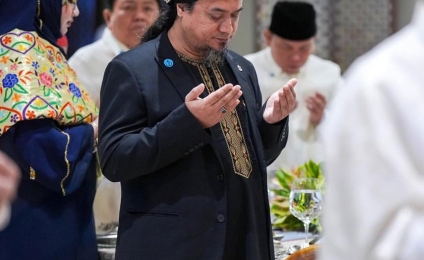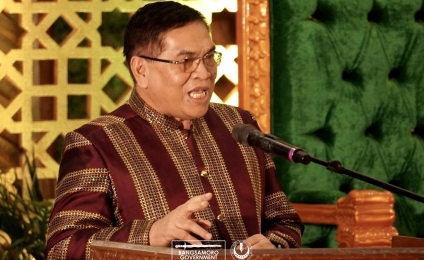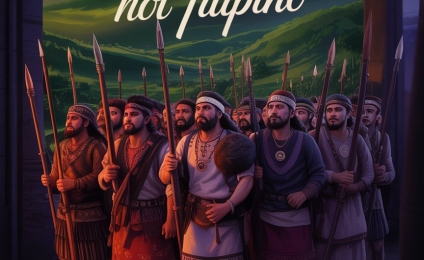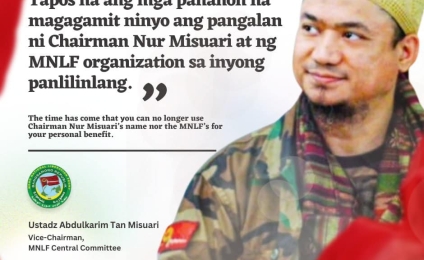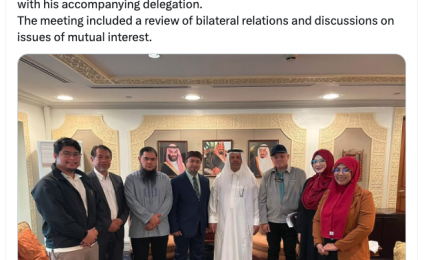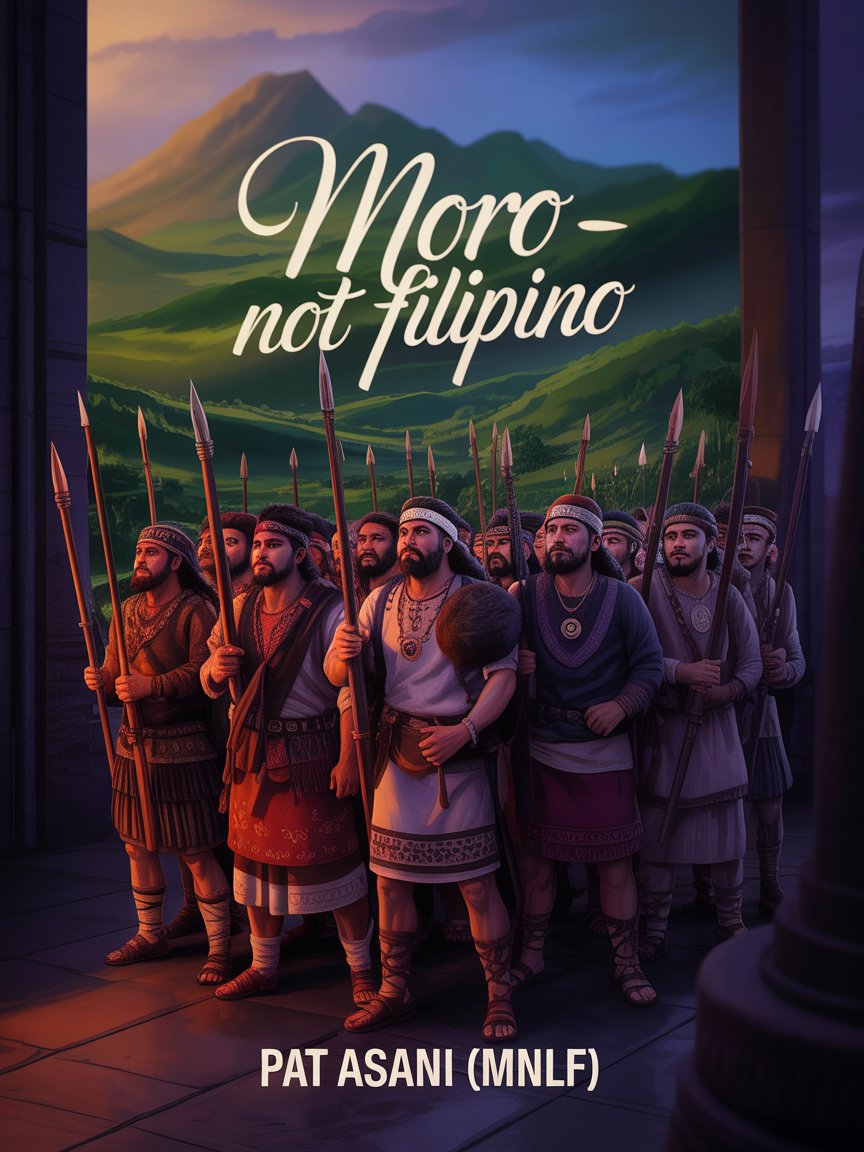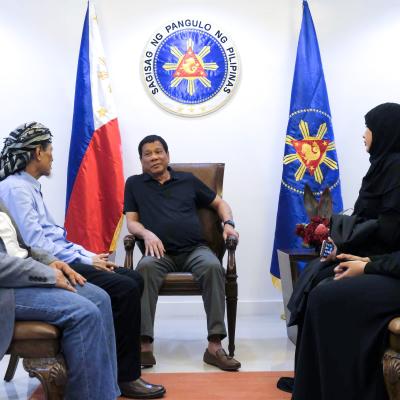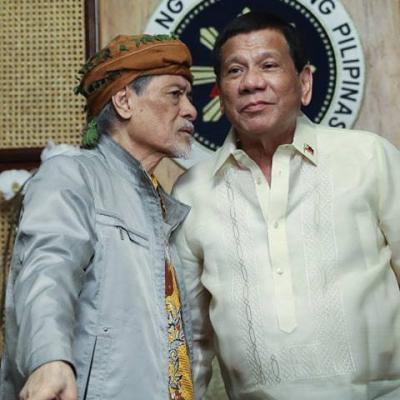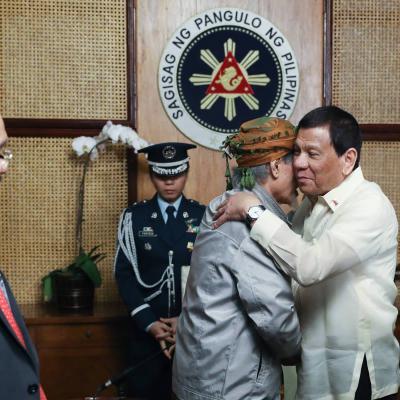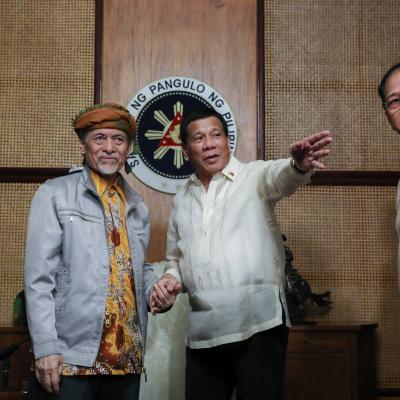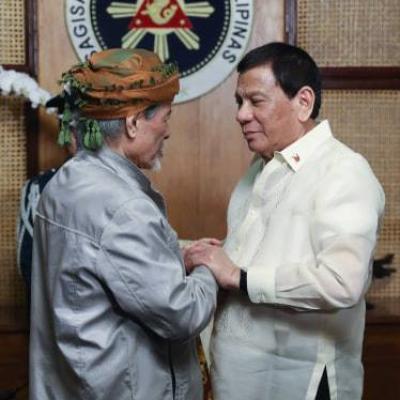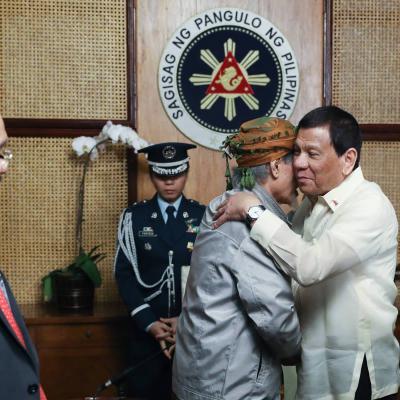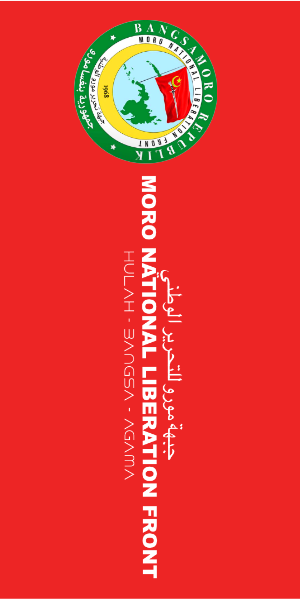SOMEWHERE in Damascus, Syria, sometime in August of 1989, then Chair of the Committee on Information of the Moro National Liberation Front (MNLF), Abdurasad ‘Tat” Asani, met his martyrdom. But, not without bequeathing a legacy to the colonized people of Mindanaw and to the Banagsamoro youth and professionals as well as students of a masterpiece literature on the MNLF-launched Bangsamoro people’s revolutionary struggle for self-determination and freedom.
“Moros, not Filipinos,” was only one amongst the voluminous literature on the Moros and their heroic struggle against their oppressors written by Abdurasad Asani. He penned the eye-opening essay sometime 1975. And also that year it was circulated throughout Europe, South America, Middle East and Asia-Pacific.
However, compared with all his revolutionary literature on the Bangsamoro struggle, the MNLF master propagandist in, “Moros, Not Filipinos”, crystally underlined the events that sparked the liberation war against the American-made Government of the Republic of the Philippines (GRP) after the illegal annexation of Mindanaw on July 4, 1946.
In the opening page of his treatise, introducing the ethnic nationalities of the Bangsamoro homeland of Mindanao, Basilan, Sulu, Tawi-Tawi and Palawan, he wrote:
“Imaginative writers have given varied descriptions and labels to the Bangsamoro people and their homeland. Not a few have described them as “princesses in pearls and warriors in silk, parading to the rhythm of the agong and kulintang,” or “seafarers with the sail of their vinta outriggers slashing multi-colored triangles from the horizon”.
“Others are rather unkind and unpleasant. The Tausugs, for example, are said to be “so uncivilized…they have no words for ‘good morning’ and that they are a people who teach their children that it is a sign of weakness to speak first.”
“Whatever, impressions others may have, the fact remains that the Bangsamoro people, honed by their historical and cultural experiences, are nonetheless fortunate to be heirs to distinct social and moral values which characterize them as a nation, proud of its own heritage.”
Unquote: Aptly underpinning the rich socio-cultural heritage of the ethnic communities of Moroland, but seen by the western colonizers as a backward weakness and a valid cause for mere justification for their piratical missions to land-grab the ancestral lands and to rob the natives of their riches and posterity, the author of, “Moros, Not Filipinos,” wrote how the Bangsamoro people reacted spontaneously to the invasion of the western aggressors. All in defense of their sovereignty and freedom.
In his own words: “…The resistance waged by the Bangsamoro people against Western colonialism is perhaps one of the longest in the history of anti-colonial struggle. It began in 1578 with a Spanish mission to reduce the Sulu and Mindanao chiefs to vassalage and lasted well up to 1946, when the Bangsamoro homeland was unlawfully incorporated into Philippine territory. The Bangsamoro people, using primitive weapons and applying unsophisticated techniques in warfare, were ranged against the most powerful colonial invaders of the time…”
Unquote: In truth, the Spanish-Moro war for more than three centuries in Mindanao registered fierceness and brutality motivated by political and economic greediness on the part of the Spanish pirates to conquer a small nation that was compelled only to defend its tranquility and integrity as a sovereign state.
Vividly describing one episode during this turbulent period, the author wrote the following accounts:
“The sacred mission to reduce the Sulu and Mindanao chiefs to the obedience of the Spanish king fell on Capt. Esteban Rodriguez de Figueroa. In giving him instructions for the mission, Spanish Governor General Francisco de Sande wrote:”
“God willing, you shall go to the islands of Sulu where you shall endeavour to reduce that chief and his people to the obedience of his Majesty…
After having finished affairs in Sulu, if time permits, you shall, God willing, go to the island of Mindanao. There you shall try, by the most convenient methods…to reduce the chief of the river of Mindanao, and the other chiefs of that island, and of those nearby, to the obedience of his Majesty, giving him to understand what they will gain in becoming his Majesty’s vassals and our allies, and in having trade with us.
You shall order them not to admit any more preachers of the doctrine of Muhammad, since it is evil and false, and that of the Christians alone is good…”
“Trade for mutual benefits may have been agreeable to the Sulu and Mindanao chiefs, but vassalage was not. Hence, after two unsuccessful attempts, Figueroa met his tragic fate in the hands of a determined Moro fighter at the mouth of the river of Mindanao.”
“After Figueroa’s death, hostilities ensued and the Bangsamoro people braced themselves for a long drawn-out war. Sultan Qudarat, while touring the region of Lake Lanao around 1632, admonished a gathering of Maranao datus:”
“What have you done? Do you realize what subjection would reduce you to? A toilsome slavery under the Spaniards! Turn your eyes to the subject nations and look at the misery to which such glorious nations had been reduced to. Look at the Tagalogs and Visayans. Are you better than they? Do you think the Spaniards consider you of better stuff? Have you not seen how the Spaniards trample them under their feet? Do you not see every day how they are obliged to work at the cars and factories with all their rigours? Can you tolerate anyone with a little Spanish blood to beat you up and grasp the fruits of your labor? Allow yourselves to be subjects (today) and tomorrow you will be at the oars. I, at least, will be a pilot, the biggest favour they will allow a chief. Do not let their sweet words deceive you, their promises, facilitate their deceits, which little by little, enable them to control everything. Reflect on how even the minor promises to the chiefs of other nations were not honoured until they became masters of them all. See now what is being done to these chiefs and how they are being led in a rod.”
Unquote: In the end of the long war of attrition between the Spanish pirates and the ethnic nationalities of Mindanao, the European invaders retreated back to their forlorn origin, but not without deceiving both the American invaders and the Bangsamoro people.
Characteristic of their piratical expeditions in Asia, the Spaniards were able to sell the Indio islands, Luzon and Visayas, including the Bangsamoro homeland of Mindanao, Basilan, Sulu, Tawi-Tawi and Palawan, to the Americans for 40 million Mexican pesos. They were able to deceive the other foreign aggressors to believe that they totally conquered Mindanao.
At any rate, the deceitful conspiracy to deprive the Mindanaoan ethnic nationalities of their patrimony was sealed by this immoral collaboration entered into by both the Spanish and American buccaneers. Alas, this was more transparently observed and bolstered during the aggressive American expedition in Mindanao starting in the closing year 1898.
In their shameless cruel efforts to dig the colonial graveyard of the Moros of Mindanao similar to the barbaric crusade to implement the extinction of the aboriginal Indian natives in the so-called United States of America, the western invaders again collaborated with the Indios-rejuvenated-Filipinos of Luzon and Visayas to illegally and immorally incorporate Mindanao into the body politic of the Philippine State on July 4, 1946.
Historically, this “benevolent assimilation” misdeal was carried out despite the loud protests of the ethnic communities of Mindanao and the stern warning of a conscious American legislator, Congressman Francis Bacon, right in the heart of America itself.
In Moros, Not Filipinos, this mockery of justice was pictured by the author in his own sad revealing words:
“But both Washington and Manila were heedless to the expressed wishes of the Bangsamoro leadership. They launched the Philippine Commonwealth government in 1936 with the promise that American colonialism would finally withdraw 10 years later. This was the scenario when World War II came.”
“During World War II, the Bangsamoro opposition to annexation was lost amid the sounds of bombs and cannons. The Bangsamoro people fought against the Japanese Imperial Army, which, to them, was just another colonial invader. Barely had the war ended when American proclaimed Philippine independence on July 4, 1946. The process of absorption – of (Indioization) Filipinazation, leading to annexation – had come to an anticlimax. The Americans and the Filipinos – all of them, and this is the crux of the problem – deliberately forgot (U.S. Congressman Francis) Bacon’s reminder that:
“The Christian Filipinos have no right…to determine the government of the Moro people nor to shape the solution of the Moro problem according to their particular interests. This right was not given them by the Treaty of Paris, is in violation of the conditions whereby the Moro leaders gave…obedience to American authority, and should never have been conceded by the Congress of the United States. If a reversionary right to these southern islands…exists in anyone, it is the Moro and not the…Filipino who is entitled hereto.”
Unquote: Be it as it may, the historical blunder was treacherously done. Thus, the predicted Filipino-Moro conflict burst forth with all violent fury to pale out in comparison with the past Spanish-Moro and American-Moro wars in terms of magnitude in barbarism and nightmare.
Sadly, this historical conflict will endlessly go on if both the oppressors and the oppressed cannot meet on a common ground to deescalate the widening conflict.
The contemporary Filipino-Moro war of attrition has had cost both the colonizers and the colonized “more than half a million lives, close to a million refugees” and countless material losses. Unfortunately, both the Asian combatants have come out merely the losers. Contrary to any claim or counter claim, no side has come out distinctly the real winners.
However, is war Mindanao rather than peaceful Mindanao more attuned to Christian Manila politics?
What is really the correct formula that can forever buy peace in Mindanao?
The author of “Moros, Not Filipinos” has these explicit words to remind us of the past mistake:
“One might have thought, nay wished, that after four decades of efforts to Filipinize the Bangsamoro people, the wall of distinction between the Filipinos and the Moros have disappeared. But the hard truth is that, as prophesied by the Lanao datus at Dansalan, annexation has instead put them on the shredding machine of political conflict and violence in which one manifestly pursues an attempt to dominate and – possibly – extinguish the other while this other stubbornly digs in his heels in a last-ditch effort to preserve a historic heritage and survival itself. Philippine independence was merely a historical threshold which has transformed the relations between the two peoples from one tragic episode to another.”
Unquote: Is it not then possible at this stage to rewrite the history of Mindanao from a melodramatic theatre of continued genocidal wars of the natives against their barbaric oppressors to a dramatic theatre of perpetual peace and tranquility among God-fearing neighboring peoples?
If only one in the past had written – “Spaniards, Americans, Filipinos, and Moros – Peace, Not War”!
It would have been a far better world in the new millennium for the peace-loving humanity, particularly the Malayan race of Southeast Asia.
And, who knows? Filipino national heroes, like Andres Bonifacio and Ninoy Aquino, and Bangsamoro martyrs, like Emir Kulafu (Lapu Lapu), Sultan Qudarat and Alhaj Vandahari Jajurie, could have really rest in peace!
But now, the Filipino-Moro war has to be continuously fought by both the colonizers and the colonized.
All because of colonial greed and love for freedom.



 – Awarded for his role in promoting peace and dialogue in the Southern Philippines, particularly in the Mindanao conflict1_small.png)
